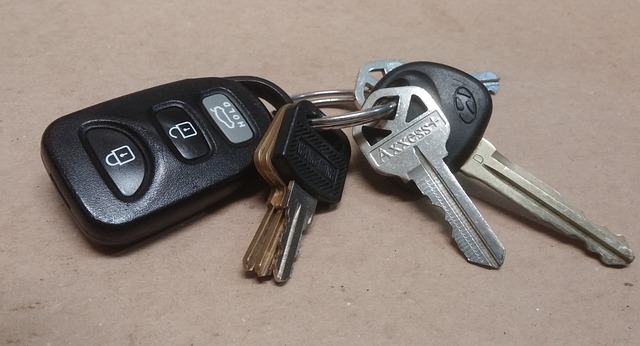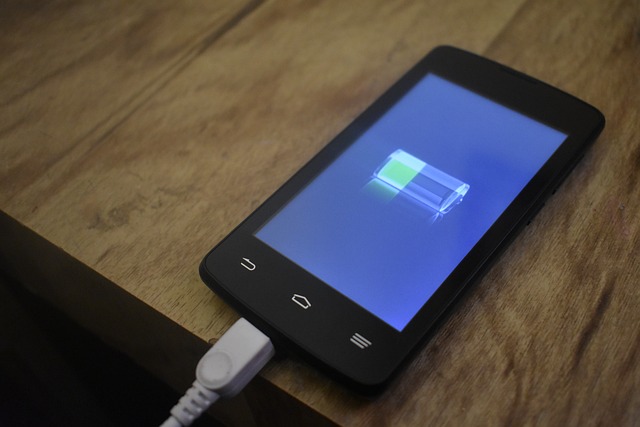Button batteries, commonly found in devices like hearing aids and watches, are a growing environmental concern due to their toxic composition containing lithium, mercury, and alkaline substances. Improper disposal can lead to soil and waterway contamination, causing ecological damage. Addressing this issue requires effective recycling processes tailored to different battery types and materials, which is being supported by evolving regulations globally. These include mandates for manufacturers to implement take-back programs and educational campaigns to encourage responsible disposal. The United States has federal laws like the Federal Hazardous Substances Act (FHSA) to ensure proper handling, with the Environmental Protection Agency (EPA) providing oversight at the state level where additional regulations may be enacted to protect public health and the environment. The European Union leads with a comprehensive strategy through directives like WEEE and RoHS, mandating high collection and recovery rates for button batteries and restricting hazardous substances, promoting a circular economy by prioritizing material recovery and extending product lifecycles. Both manufacturers and consumers play critical roles in this process, ensuring safe disposal and sustainable practices to mitigate the risks associated with these powerful yet hazardous small batteries.
Button batteries power a myriad of everyday devices, yet their improper disposal poses significant environmental risks. This article delves into the critical subject of battery recycling regulations globally, with a focus on button batteries. It provides an overview of the ecological consequences of their disposal, examines international standards for recycling these small but potent cells, and dissects the specific regulations within the United States. Additionally, it explores Europe’s comprehensive approach to electronic waste management, including its Button Battery Recycling Regulations, as part of the WEEE Directive. Finally, it outlines best practices for both consumers and manufacturers to ensure responsible recycling of button batteries, emphasizing the importance of sustainable habits in this realm.
- Overview of Button Battery Recycling and Its Environmental Impact
- International Standards for Button Battery Recycling: A Global Perspective
- United States Regulations on Button Battery Collection, Transportation, and Recycling
- Europe's Approach to Button Battery Recycling and Waste Electrical and Electronic Equipment (WEEE) Directive
- Best Practices for Button Battery Recycling in the Consumer and Manufacturing Sectors
Overview of Button Battery Recycling and Its Environmental Impact

Button batteries, small cells critical for powering devices like hearing aids, watches, and remote controls, present a significant environmental challenge upon reaching their end-of-life. These batteries, also known as coin cells, contain hazardous materials such as lithium, mercury, and alkaline compounds that can leach into the soil and water systems, causing ecological harm if disposed of improperly. Recycling efforts for button batteries are pivotal in mitigating this environmental impact; they ensure that the toxic components are recovered and reprocessed responsibly. The recycling process involves different methods depending on the battery type and material composition, with the ultimate goal of minimizing waste and preventing the release of harmful substances into the environment.
Regulatory frameworks around button battery recycling vary by jurisdiction but generally aim to increase collection rates and improve the efficiency of recycling processes. In many regions, there are mandates for manufacturers to participate in take-back programs, facilitating the return of used batteries for proper recycling. Additionally, consumer awareness campaigns play a crucial role in educating the public on the importance of recycling these items correctly. The environmental impact of improperly disposed button batteries is substantial, as they can contaminate ecosystems and pose risks to wildlife and human health. Consequently, the establishment and enforcement of effective battery recycling regulations are vital to protect the environment and ensure sustainable resource management.
International Standards for Button Battery Recycling: A Global Perspective

button batteries are small, round cells used in a variety of household and consumer electronics, including watches, hearing aids, and remote controls. The recycling of these batteries is critical due to their lithium content, which can pose environmental and health risks if improperly disposed of. International standards for the recycling of button batteries have been established to address the global proliferation of electronic waste containing these batteries. These standards, such as those set by the International Electrotechnical Commission (IEC), outline specific procedures for the collection, sorting, and treatment of spent button batteries. The IEC’s guidelines are designed to harmonize recycling practices across different countries, facilitating a more efficient and sustainable process that minimizes the environmental impact. Furthermore, these standards encourage the recovery of materials like lithium, which can be reintroduced into the manufacturing supply chain, thus promoting a circular economy. The implementation of these international standards varies by region, with some countries having more stringent regulations than others, but the overarching goal is to ensure that button batteries are recycled responsibly and effectively worldwide. This global approach ensures that as the use of electronic devices proliferates, so too does the proper management of their associated waste streams.
United States Regulations on Button Battery Collection, Transportation, and Recycling

In the United States, regulations surrounding the collection, transportation, and recycling of button batteries are guided by a combination of federal and state laws. At the federal level, the Federal Hazardous Substances Act (FHSA) includes provisions for the management of mercury-containing buttons, which also extend to button batteries due to their similar composition and hazard potential. The FHSA sets forth guidelines for proper disposal, including requirements for retailers to provide consumers with recycling options or disposal instructions. The Environmental Protection Agency (EPA) provides guidance and works in collaboration with state environmental agencies to ensure compliance with these regulations.
On a state level, individual states have the authority to enact more stringent laws regarding button battery disposal and recycling. Many states have established specific programs for the collection of these batteries due to their high risk of causing harm if improperly disposed of, as they can pose serious health risks if swallowed or broken in a household waste setting. Collection programs often involve partnerships with local government bodies, electronic waste recyclers, and manufacturers to facilitate the responsible handling of button batteries post-consumer use. The focus is on creating convenient access points for consumers to return used button batteries, ensuring their safe transportation to designated processing facilities where they are properly recycled. These efforts aim to mitigate environmental contamination and reduce the health risks associated with battery components like lithium and other heavy metals.
Europe's Approach to Button Battery Recycling and Waste Electrical and Electronic Equipment (WEEE) Directive

Europe’s approach to the recycling of button batteries, which are commonly used in household items such as hearing aids, watches, and remote controls, is structured and comprehensive. The European Union’s Waste Electrical and Electronic Equipment (WEEE) Directive sets stringent collection, recycling, and recovery targets for these small but hazardous devices. Under this directive, manufacturers are responsible for financing the collection, treatment, reuse, and environmentally sound disposal of electrical and electronic equipment. This mandates that button batteries be properly segregated within the WEEE stream to prevent them from ending up in landfills. The EU’s regulations also emphasize the importance of extending the lifecycle of these products through repair and refurbishment wherever possible, thus promoting a circular economy.
Furthermore, the EU has implemented specific guidelines under the RoHS (Restriction of Hazardous Substances) Directive to limit the use of certain hazardous materials found in button batteries. These regulations ensure that the recycling process is safer for workers and less harmful to the environment. The EU’s strategic framework on the circular economy also supports the development of infrastructure for the collection, sorting, and treatment of battery waste, including button batteries. This comprehensive approach aims to increase the efficient recovery of valuable materials from these batteries, reducing reliance on raw material extraction and minimizing the environmental impact of electronic waste.
Best Practices for Button Battery Recycling in the Consumer and Manufacturing Sectors

The disposal and recycling of button batteries present unique challenges due to their small size, which can lead to ingestion by children and pets, and their high energy density, which makes them a fire hazard. Consumers are encouraged to properly dispose of used button batteries by participating in community collection programs or returning them to retail outlets and manufacturers that offer take-back schemes. These initiatives ensure that the batteries do not end up in landfills, where they could leak harmful substances into the environment. Manufacturers play a pivotal role in the recycling process by designing batteries with easy removal mechanisms and providing clear instructions for safe disposal. Additionally, they should collaborate with recycling facilities to handle the collected batteries effectively, extracting valuable metals and reducing the environmental impact. It is crucial for both consumers and manufacturers to adhere to responsible practices, as button batteries contain hazardous materials like lithium, mercury, and alkaline substances that can be harmful to both human health and ecosystems if improperly disposed of. By implementing and promoting these best practices, we can mitigate the risks associated with button battery disposal and support a more sustainable and environmentally friendly approach to this essential technology.
Button batteries play a pivotal role in powering everyday devices, yet their improper disposal poses significant environmental risks. This article has illuminated the comprehensive regulatory frameworks that govern button battery recycling worldwide. From international standards to region-specific protocols such as those in the United States and Europe, it’s clear that concerted efforts across continents are pivotal in mitigating ecological harm. Consistent with these regulations, both consumers and manufacturers must adhere to best practices to ensure responsible recycling of these essential but hazardous components. As governments and industries continue to refine these policies, the collective commitment to sustainability and safety remains paramount.
